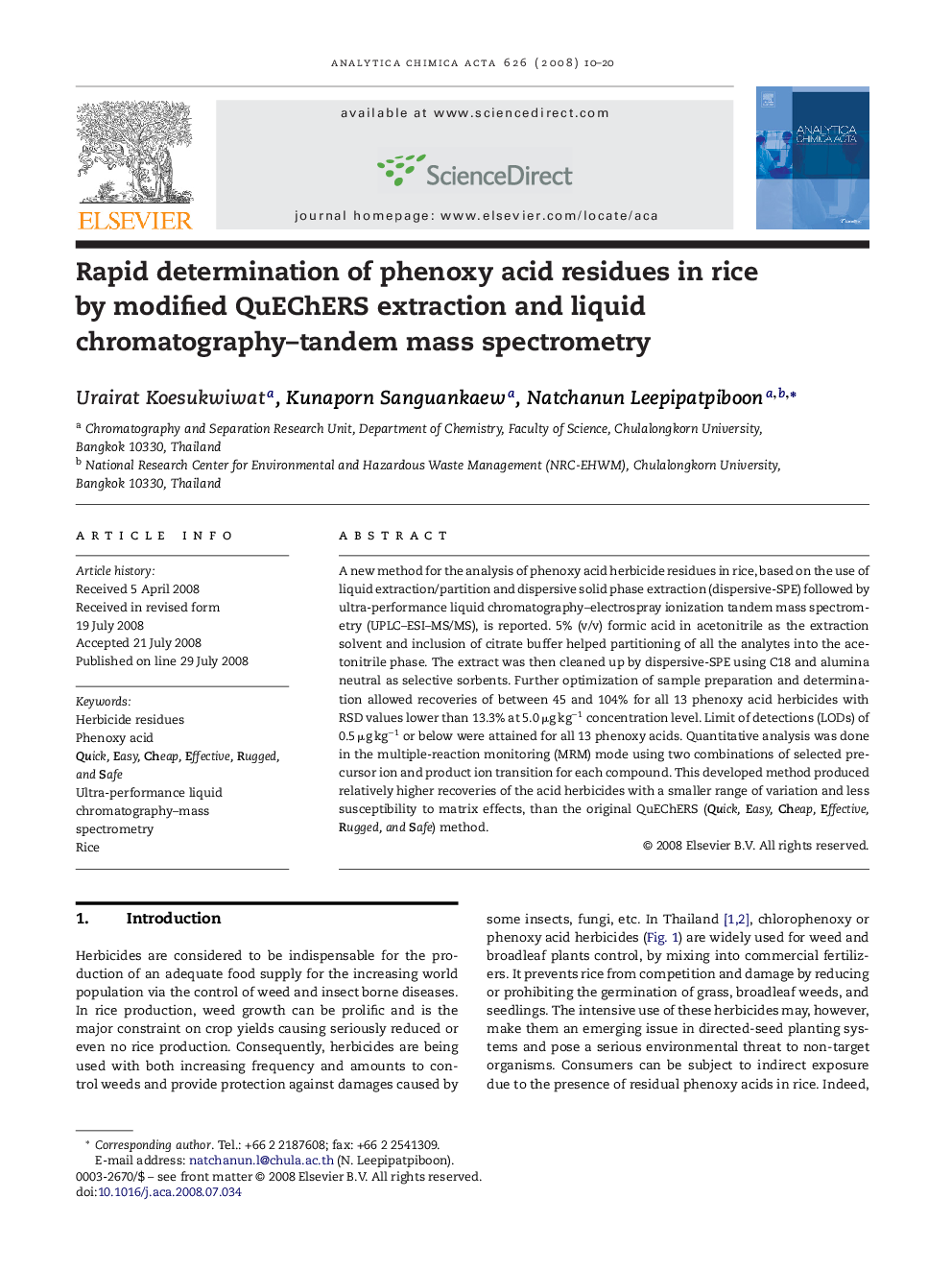| Article ID | Journal | Published Year | Pages | File Type |
|---|---|---|---|---|
| 1169221 | Analytica Chimica Acta | 2008 | 11 Pages |
A new method for the analysis of phenoxy acid herbicide residues in rice, based on the use of liquid extraction/partition and dispersive solid phase extraction (dispersive-SPE) followed by ultra-performance liquid chromatography–electrospray ionization tandem mass spectrometry (UPLC–ESI–MS/MS), is reported. 5% (v/v) formic acid in acetonitrile as the extraction solvent and inclusion of citrate buffer helped partitioning of all the analytes into the acetonitrile phase. The extract was then cleaned up by dispersive-SPE using C18 and alumina neutral as selective sorbents. Further optimization of sample preparation and determination allowed recoveries of between 45 and 104% for all 13 phenoxy acid herbicides with RSD values lower than 13.3% at 5.0 μg kg−1 concentration level. Limit of detections (LODs) of 0.5 μg kg−1 or below were attained for all 13 phenoxy acids. Quantitative analysis was done in the multiple-reaction monitoring (MRM) mode using two combinations of selected precursor ion and product ion transition for each compound. This developed method produced relatively higher recoveries of the acid herbicides with a smaller range of variation and less susceptibility to matrix effects, than the original QuEChERS (Quick, Easy, Cheap, Effective, Rugged, and Safe) method.
